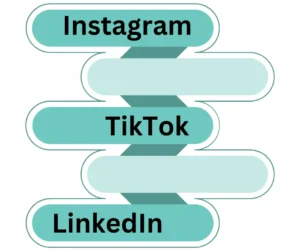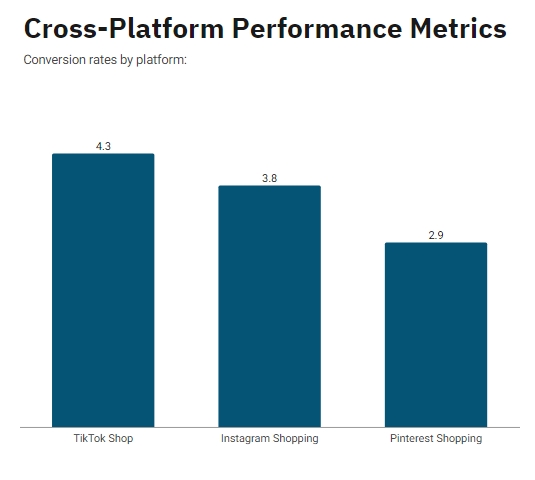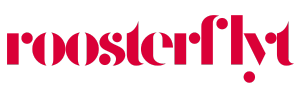Remember when a simple banner ad was considered cutting-edge marketing? Those days feel like ancient history. Today’s digital advertising is an adrenaline-fueled race where AI predicts your customer’s next click before they even think about it. We’re living in an age where your smartphone knows what you want to buy before you do, and virtual reality lets you test-drive a car from your couch.
But here’s what’s really mind-blowing: we’re just scratching the surface. The same technology that serves you those eerily accurate Instagram ads is evolving faster than ever, and the possibilities are staggering. Ever wondered how some brands seem to read your mind? Or why that one ad follows you everywhere online?
The digital advertising game isn’t just changing – it’s being completely reimagined. And for businesses, understanding these shifts isn’t just about staying current – it’s about surviving in a marketplace where yesterday’s cutting-edge strategy is today’s old news.
Want to know what’s really happening behind the scenes of the ads that seem to know you better than you know yourself? Read on…
A New Era of Engagement
The digital advertising ecosystem has expanded far beyond traditional platforms, creating both opportunities and challenges for marketers. While Google and Facebook continue to dominate the landscape—accounting for over 60% of digital ad spending in 2023—emerging platforms are rapidly gaining ground.
Key Players Reshaping the Industry

Google and Meta platforms still lead in ROI, with businesses reporting an average return of $2.87 for every dollar spent on Google Ads and $2.52 on Facebook Ads. However, the real story lies in the meteoric rise of these platforms:
- TikTok has seen a year-over-year increase in ad revenue, with brands reporting higher engagement rates for micro-influencer content
- Instagram’s Reels ads reach 758.5 million users globally, with businesses seeing up to 2.5x higher engagement compared to traditional post formats
- LinkedIn’s B2B advertising platform has shown a solid increase in conversion rates for lead generation campaigns
Emerging Experimental Channels
The advertising frontier is expanding beyond traditional social media platforms, with innovative channels showing promising early results:
- Gaming metaverse platforms like Roblox (with 59.9 million daily active users) are becoming virtual billboards, hosting virtual concerts and branded experiences from luxury names like Gucci to sportswear giants Nike
- Discord’s premium server partnerships and verified servers provide direct access to highly engaged Gen Z communities
- BeReal‘s “unfiltered” advertising pilot program is pioneering authentic marketing moments that align with the platform’s spontaneous nature
- Reddit‘s revamped advertising platform shows better cost-per-conversion rates for niche B2B and special interest audiences
- Pinterest‘s shoppable AR pins and live shopping features are transforming discovery into immediate purchase opportunities
Innovative Formats Taking Center Stage
The future of advertising lies in formats that seamlessly blend with user experiences. TikTok’s Spark Ads have revolutionized this approach, allowing brands to boost organic content and achieve higher engagement rates compared to traditional ad formats. Meanwhile, programmatic advertising continues to evolve, with AI-driven placements delivering better cost efficiency across campaigns.
Interactive Advertising Evolution
The next wave of advertising formats is breaking the two-dimensional barrier:
Augmented Reality (AR) campaigns are showing higher conversion rates compared to traditional display ads
Shoppable livestreams generate 10x longer engagement times than standard video ads
Interactive DOOH (Digital Out-of-Home) advertising is achieving higher recall rates
Voice commerce advertising through smart speakers has seen a year-over-year growth in consumer engagement
In-game advertising and esports sponsorships are delivering higher brand recall among Gen Z audiences
Privacy-First Advertising
The digital advertising world is experiencing a fundamental shift driven by privacy concerns. The most immediate catalyst is Google’s removal of third-party cookies from Chrome in 2024, combined with Apple’s and Meta’s privacy changes. These changes aren’t just technical updates – they’re dramatically impacting how advertisers reach their audiences, with many reporting significant increases in customer acquisition costs and difficulties in targeting the right users.
Emerging Solutions and Technologies
To adapt to this new landscape, three major solution areas are emerging:
First, companies are turning to first-party data – information they collect directly from their customers. This shift is leading to the rise of “data clean rooms,” secure environments where advertisers can analyze customer data without directly accessing it. Many enterprise companies are betting big on this approach, with many more planning to implement these solutions by 2025.
Second, we’re seeing innovative privacy-preserving technologies take center stage. These include complex solutions like homomorphic encryption, which allows data to be processed while remaining encrypted, and zero-knowledge proofs, which can verify information without revealing the underlying data. While these sound technical, they’re essentially ways to use data while keeping it private.
Third, contextual advertising is making a sophisticated comeback. Unlike its older keyword-matching version, modern contextual advertising uses AI to understand content more deeply – analyzing sentiment, visual elements, and even audio content to place relevant ads without needing personal data.
Looking ahead to 2026 and beyond, the industry is moving toward decentralized advertising systems where users have more control over their data. AI will play a crucial role, not just in targeting ads but in protecting privacy through techniques like on-device processing and federated learning.
Strategic Recommendations for Advertisers
For businesses, the path forward requires both immediate action and long-term planning. The most successful organizations will be those that build strong first-party data relationships with their customers while investing in privacy-enhancing technologies. The key is to view these changes not as obstacles but as opportunities to build stronger, more trusted relationships with customers.
This transformation is about more than just complying with regulations – it’s about reimagining how digital advertising can work in a world where privacy comes first. The future belongs to companies that can innovate while respecting user privacy, leveraging new technologies to create effective advertising that doesn’t compromise personal data.
Budget Optimization Strategies
While AI and machine learning are revolutionizing how we optimize campaign spending, the true power of these tools can only be unlocked through a deeper understanding of how each platform performs. The digital advertising landscape isn’t a monolith—it’s a diverse ecosystem where success metrics can vary dramatically across channels. To truly master budget allocation, we need to dive into the nuanced performance metrics that define success on each platform.
Cross-Platform Performance Metrics
Understanding platform-specific performance is crucial for optimal budget allocation:

Cost comparison:
- Traditional social media: $5.2 average CPA
- Emerging platforms: $3.7 average CPA
- Gaming/Metaverse: $4.5 average CPA
User engagement metrics:
- BeReal: 21-minute average daily time spent
- Roblox: 156 minutes average daily engagement
- Discord: 280 minutes average daily active user time
With platform performance metrics painting a clear picture of where audiences are engaging most deeply, the next critical challenge becomes mastering the art of budget allocation across this complex digital ecosystem. While the data tells us where to find our audiences, the real magic lies in how we distribute our resources to maximize impact without bleeding budgets dry.
Budget Optimization Strategies
The days of static budget allocation are long gone. In today’s multi-platform reality, smart budget optimization isn’t just about cutting costs—it’s about fluid, real-time distribution that follows performance signals across channels. Companies implementing AI-driven budget optimization report:
- 23% reduction in cost per acquisition
- 31% improvement in ROAS (Return on Ad Spend)
- 47% increase in conversion rates through automated bid management
Emerging Technologies Driving Efficiency
AI and machine learning are revolutionizing campaign management:
- Predictive analytics reduce wasted ad spend
- Automated A/B testing increases conversion rates
- Dynamic creative optimization improves click-through rates
Performance Marketing Insights
The most successful campaigns today rely heavily on data-driven decision-making. Consider these real-world examples:
A global e-commerce brand increased its ROAS by:
- Implementing advanced audience segmentation
- Utilizing predictive lifetime value modeling
- Deploying dynamic creative optimization
- A B2B software company achieved a huge increase in qualified leads through:
- Cross-channel attribution modeling
- Intent-based targeting
- AI-powered lead scoring
Demonstrating Data-Driven Advertising Capabilities
Organizations embracing comprehensive data-driven strategies consistently demonstrate superior results such as:
- Customer Lifetime Value: Advanced segmentation and personalization strategies drive an increase in average customer value over traditional approaches.
- Acquisition Efficiency: Sophisticated targeting and optimization leading to lower customer acquisition costs while maintaining or improving quality.
- Retention Rates: Data-driven engagement strategies resulting in better customer retention, particularly evident in subscription-based models.
Building Future-Ready Marketing Operations
To establish a robust, future-proof marketing operation, business must:
Invest in First-Party Data Infrastructure
- Develop robust data collection mechanisms across all customer touchpoints
- Create clear value exchanges that encourage voluntary data sharing
- Implement real-time data processing capabilities for immediate insight activation
Balance Platform Strategy
- Maintain strong presence on established channels while testing emerging platforms
- Develop channel-specific content strategies based on audience behavior patterns
- Create cross-platform measurement frameworks to understand true ROAS
Privacy-First Targeting Solutions
- Build audiences using compliant first-party data
- Implement contextual targeting capabilities
- Develop lookalike modeling based on existing high-value customer profiles
AI and Automation Integration
- Deploy machine learning for bid optimization
- Automate creative testing and optimization
- Implement predictive analytics for campaign planning
Conclusion
As we stand at the crossroads of digital advertising’s evolution, one thing becomes crystal clear: the future belongs to those who can masterfully blend technological innovation with authentic human connection. The landscape we’ve explored reveals a transformation far deeper than just new platforms or tools – it’s a fundamental reimagining of how brands connect with their audiences.
This new era demands a delicate balance. On one side, we have groundbreaking technologies – AI-driven optimization, immersive AR experiences, and sophisticated privacy-preserving solutions. On the other, we have an increasingly privacy-conscious consumer base seeking authentic, valuable interactions. The winners in this space will be those who don’t just adapt to these changes but embrace them as opportunities to build stronger, more meaningful connections with their audiences.


Leave a Reply